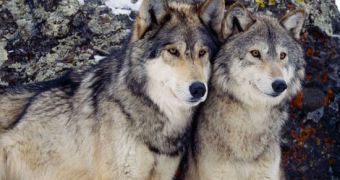As of this past Friday, the gray wolves in Wyoming are no longer listed as an endangered species, which means that, starting with the 30th of September, their population is to be managed by state authorities.
The US Fish and Wildlife Service informs us that, according to recent headcounts, the Northern Rocky Mountains are presently home to 1,774 adult wolves, of which more than 220 constitute breeding pairs. Therefore, the species can be argued to have made a recovery, rendering strict conservation projects obsolete.
Still, the wolves are to be closely monitored throughout a period of time of at least five years, so as to make sure that their population is not affected by a sudden and unexpected decline.
Speaking on behalf of the aforementioned organization, Director Dan Ashe wished to make it as clear as possible that, “Our primary goal, and that of the states, is to ensure that gray wolf populations in the Northern Rocky Mountains remain healthy, giving future generations of Americans the chance to hear its howl echo across the area.”
He further elaborated on this issue, arguing that “No one, least of all Idaho, Montana and Wyoming, wants to see wolves back on the endangered species list. But that’s what will happen if recovery targets are not sustained.”
It comes as no surprise that several green-oriented groups disapprove of this decision and claim that the gray wolves in Wyoming require further protection, given the fact that, with legal repercussions no longer at stake, hunting activities could once again decimate this species sooner than one might expect.
More so since, under the new legislation concerning this species, wolves can be shot on sight if they happen to venture outside the Yellowstone National Park, which is now the only area where hunting them is strictly off limits.
As far as they are concerned, this management plan for the wolf population in Wyoming will eventually eliminate wolves from all other regions of the state, except for the Yellowstone National Park, and this can hardly be considered a gain as far as protecting biodiversity is concerned.

 14 DAY TRIAL //
14 DAY TRIAL //